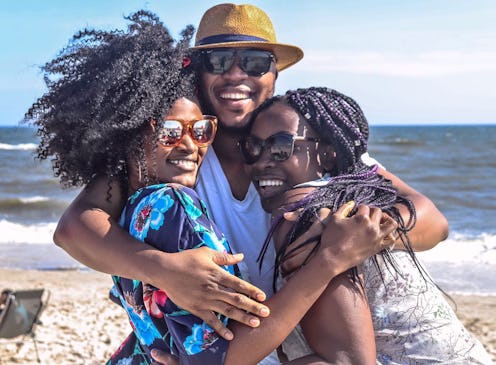Life
This Museum Wants To Archive Your Cheesy Home Movies As Actual History
If this Thanksgiving is anything like all the other Thanksgivings since 1996, there will be plenty of dancing, laughing, and remembering the good ol’ days. Some time after saying grace, but before your cousins go on a walk around the neighborhood, someone will invariably go digging through a stack of VHS tapes to play home movies. The videos played during each family gathering are always cheesy and embarrassing, but they also are an important part of American history. Yes, you read that correctly — at least according to the National Museum of African American History and Culture. The NMAAHC will digitize your home videos for free through The Great Migration Home Movie Project, in an effort to archive the "important analog audiovisual media" of Black families.
Representation in media is incredibly important, but for a long time, Black Americans received little to no positive representation in televisions and movies. While a lack of representation isn’t physically violent, it can have severe psychological effects. “There’s this body of research and a term known as ‘symbolic annihilation,’ which is the idea that if you don’t see people like you in the media you consume, you must somehow be unimportant,” Nicole Martins, a professor at the University of Indiana Bloomington, told HuffPost. Despite not receiving adequate representation in public media, Black families have been creating and sharing our own media through home movies for decades.
Home movies are used to document important milestones — first steps, birthdays, weddings, and graduations. They also capture everyday, non-newsworthy moments. Families record cookouts, barefoot street races, and trips to the beach. The creators of the Movie Project see these home videos as more than just nostalgic time capsules. They believe “these personal narratives serve as an invaluable tool for understanding and re-framing Black moving image history, and provide a much needed visualization of African American history and culture” according to the official website for the NMAAHC.
Individuals or organizations who are interested in getting their VHS tapes digitized for free can schedule an appointment with the museum's audiovisual conservation team. The team can digitize motion picture film, obsolete videotape formats, and various audio formats. Digitizing just 10 tapes can cost nearly $300 if done with a private company, which is money that many Black Americans cannot afford (or don't want) to spend. The media conservators facilitating this project are well aware of this. Preservation and access are why this initiative exists in the first place, and the project wouldn’t be possible without the generous donations from Robert F. Smith and Earl W. and Amanda Stafford.
Being a documented part of American history is really important. Many rejoiced when the NMAAHC opened in Sept. 2016. Walking through the exhibits and seeing people who look like you is empowering. Being the person or family that is being preserved in a museum is especially empowering. Those who participate in this free service will get to be an extension of the popular museum. “Just as the museum explores what it means to be an American and share how American values like resiliency, optimism, and spirituality are reflected in African American history and culture; these films are a moving image record of these values in practice,” the project's webpage states.
In The Warmth of Other Suns, Isabel Wilkerson wrote, “The past is of value only as it aids in understanding the present.” Thanks to the National Museum of African American History and Culture, generations of Black folks will be able to look at digitized images of their families and their cheesy home movies, and understand where they came from and where they’re going.
